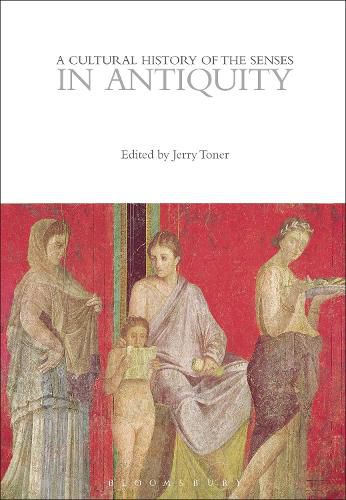Readings Newsletter
Become a Readings Member to make your shopping experience even easier.
Sign in or sign up for free!
You’re not far away from qualifying for FREE standard shipping within Australia
You’ve qualified for FREE standard shipping within Australia
The cart is loading…






The ancient world used the senses to express an enormous range of cultural meanings. Indeed the senses were functionally significant in all aspects of ancient life, often in ways that were complex and interconnected. Antiquity was also a period where the senses were experienced vividly: cities stank, statues were brightly painted and literature made full use of sensory imagery to create its effects. In a steeply hierarchical world, with vast differences between the landed wealthy, the poor and the slaves, the senses played a key role in establishing and maintaining boundaries between social groups; but the use of the senses in the ancient world was not static. New religions, such as Christianity, developed their own way of using the senses, acquiring unique forms of sensory-related symbolism in processes which were slow and often contested. The aim of this volume is to provide an overview of these structures and developments and to show how their study can yield a more nuanced understanding of the ancient world.
A Cultural History of the Senses in Antiquity presents essays on the following topics: the social life of the senses; urban sensations; the senses in the marketplace; the senses in religion; the senses in philosophy and science; medicine and the senses; the senses in literature; art and the senses; and sensory media.
$9.00 standard shipping within Australia
FREE standard shipping within Australia for orders over $100.00
Express & International shipping calculated at checkout
The ancient world used the senses to express an enormous range of cultural meanings. Indeed the senses were functionally significant in all aspects of ancient life, often in ways that were complex and interconnected. Antiquity was also a period where the senses were experienced vividly: cities stank, statues were brightly painted and literature made full use of sensory imagery to create its effects. In a steeply hierarchical world, with vast differences between the landed wealthy, the poor and the slaves, the senses played a key role in establishing and maintaining boundaries between social groups; but the use of the senses in the ancient world was not static. New religions, such as Christianity, developed their own way of using the senses, acquiring unique forms of sensory-related symbolism in processes which were slow and often contested. The aim of this volume is to provide an overview of these structures and developments and to show how their study can yield a more nuanced understanding of the ancient world.
A Cultural History of the Senses in Antiquity presents essays on the following topics: the social life of the senses; urban sensations; the senses in the marketplace; the senses in religion; the senses in philosophy and science; medicine and the senses; the senses in literature; art and the senses; and sensory media.